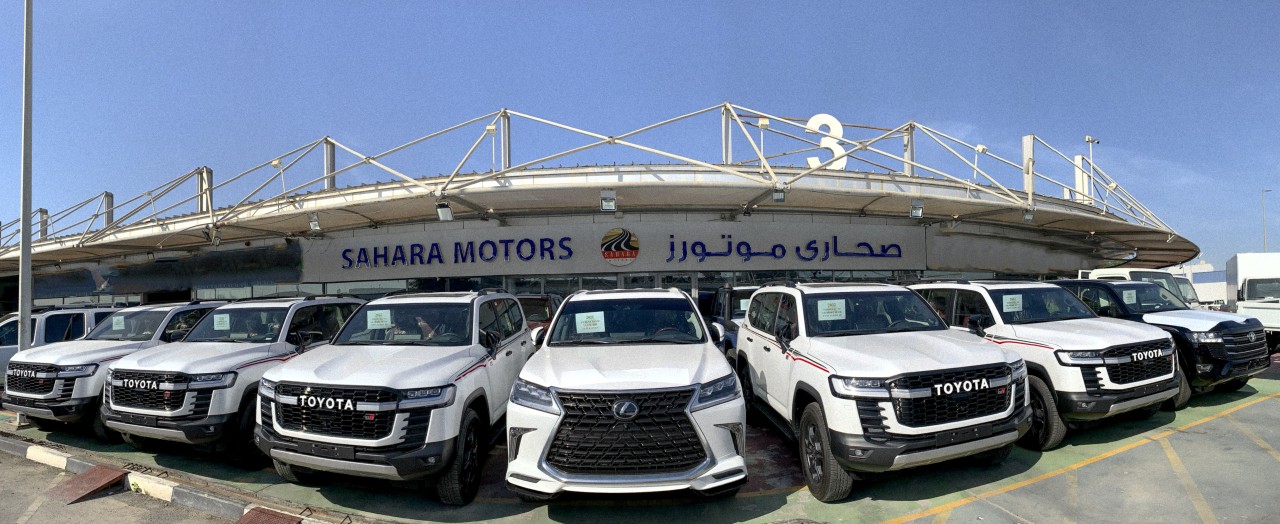Importing a car from Dubai to Saudi Arabia can be an exciting yet complex process. Dubai is known for its luxury car market, and many residents of Saudi Arabia are interested in purchasing vehicles from there due to the variety, pricing, and often, the lower mileage of second-hand cars. However, the process of importing a vehicle involves several steps, legal regulations, and logistical considerations that you must follow. This guide will walk you through how to import a car from Dubai to Saudi Arabia in 2024, ensuring that you are well-prepared for every aspect of the procedure.
Understanding the legal requirements
The first and most important step in learning how to import a car from Dubai to Saudi Arabia is understanding the legal requirements set by the Saudi Arabian authorities. Without adhering to these regulations, your car import process could face unnecessary delays or be denied altogether.
Age Limit of the Vehicle
As of 2024, Saudi Arabia allows the importation of passenger cars that are no more than five years old. This rule is strictly enforced, and exceptions are not generally granted. For heavy vehicles like trucks, the limit is 10 years. Vehicles older than the stipulated period are not permitted for import.
Compliance with GCC Specifications
Any car imported from Dubai to Saudi Arabia must comply with the Gulf Cooperation Council (GCC) specifications. This includes certain safety and environmental standards, such as proper airbag systems, specific lighting configurations, and emission controls. If the car does not meet these standards, it may need modifications, or it could be refused entry altogether.
Left-Hand Drive
Saudi Arabia only allows the importation of left-hand drive vehicles. Right-hand drive vehicles are not permitted.
Ownership and Proof of Purchase
You must be the owner of the vehicle, and the car should be in your name. You will also need to provide proof of purchase, including the original invoice, registration documents from Dubai, and other necessary paperwork to demonstrate the legal acquisition of the vehicle.
Gathering the necessary documents
To import a car from Dubai to Saudi Arabia, you will need to compile a list of specific documents to present to the Saudi customs authorities. This documentation process can be time-consuming, so it’s wise to prepare everything in advance.
Required Documents
Original Vehicle Invoice
Proof of purchase showing the cost of the vehicle.
Proof of Ownership
A document that confirms the vehicle is legally yours.
Export Certificate
Issued by the Dubai Roads and Transport Authority (RTA), this is required for exporting the vehicle from Dubai.
Vehicle Registration Document
To show that the car was registered in Dubai.
Passport Copy or National ID
Identification of the vehicle owner.
Insurance Documents
Proof of insurance during the shipping process.
Compliance Certificates
Documents proving the vehicle complies with GCC specifications.
Bill of Lading
Issued by the shipping company, this document lists the car being transported and includes the vehicle’s make, model, and year.
Gathering these documents ahead of time will ensure that the importation process runs smoothly.
Choosing a Reliable Shipping Method
One of the most critical steps in understanding how to import a car from Dubai to Saudi Arabia is selecting the right shipping method. The shipping process involves transporting the vehicle from Dubai to Saudi Arabia, typically through sea or road transport.
Sea Freight
Sea freight is the most popular method for shipping cars from Dubai to Saudi Arabia. The car is transported in a container or via Ro-Ro (roll-on/roll-off) ships. Ro-Ro shipping is often cheaper, as the vehicle is simply driven onto the ship and driven off at the destination. However, container shipping provides more protection from external elements.
Port of Exit in Dubai
Jebel Ali Port is the main seaport used for car exports from Dubai.
Port of Entry in Saudi Arabia
King Abdulaziz Port in Dammam is the most commonly used port for imports into Saudi Arabia.
Road Transport
While sea freight is the more common option, some individuals choose to transport their cars via road. This involves using a car carrier that will transport the vehicle across the UAE-Saudi border.
UAE-Saudi Border Crossing
The Al Batha Border Post is the primary crossing point for cars imported from Dubai to Saudi Arabia by road.
Cost Considerations
The cost of shipping a car depends on several factors, such as the shipping method, the size of the vehicle, and the insurance coverage. Expect to pay between SAR 4,000 and SAR 10,000 for shipping alone. You will also need to cover additional costs, such as customs duties, VAT, and registration fees.
Customs duties and VAT in Saudi Arabia

When learning how to import a car from Dubai to Saudi Arabia, you must be aware of the customs duties and taxes associated with the import process. Saudi Arabia has specific rules regarding the duties payable on imported cars.
Customs Duty
The standard customs duty for importing cars into Saudi Arabia is 5% of the vehicle’s value. This value is calculated based on the price of the car as stated on the original invoice.
VAT (Value Added Tax)
As of 2024, a 15% VAT is applied to all imported vehicles. This VAT is charged on the total cost of the car, including the vehicle price, shipping cost, and customs duty.
Total Cost Breakdown
Customs Duty
5% of the car’s value.
VAT
15% of the car’s total cost (including customs duty and shipping).
Make sure to budget for these additional costs when importing your car.
Registering Your Imported Car in Saudi Arabia
Once your car has arrived and passed through customs, the next step is to register it with the Saudi Arabian Traffic Department. Without registration, you cannot legally drive the car in Saudi Arabia.
Inspection and Testing
Before registration, your car must pass a technical inspection to confirm that it meets Saudi road safety standards. The inspection typically covers the vehicle’s brakes, lights, emissions, and overall roadworthiness.
Registration Process
Visit your nearest traffic department in Saudi Arabia.
Submit your car for inspection.
Provide the required documents, including customs clearance papers, proof of insurance, and GCC compliance certificates.
Pay the registration fee.
Once the car passes inspection, you will receive Saudi license plates and registration documents.
Important Tips for a Smooth Import Process
To ensure that you successfully navigate the process of how to import a car from Dubai to Saudi Arabia, here are a few tips:
Hire a Customs Broker
A customs broker can help simplify the entire process by handling the paperwork and ensuring that your car complies with Saudi customs regulations. This can save you time and avoid potential errors.
Check Insurance Coverage
Make sure that your car is fully insured for the shipping process, especially if you are using sea freight. Some shipping companies offer insurance, but you may want to purchase additional coverage for peace of mind.
Verify the vehicle’s history.
Before purchasing a car in Dubai, make sure to check the vehicle’s history through the Dubai Police or RTA to ensure that it has no outstanding fines or legal issues that could complicate the export process.
Time the process carefully.
Importing a car can take several weeks, so make sure to time your purchase and shipping schedule accordingly. Factor in potential delays due to holidays, customs inspections, or shipping availability.
Conclusion
In 2024, the process of how to import a car from Dubai to Saudi Arabia involves several steps, from understanding legal requirements and gathering documentation to choosing the right shipping method and paying customs duties. By following the guidelines provided in this article, you can ensure a smooth and successful car importation experience. Whether you are bringing in a luxury car or a practical vehicle, careful planning and attention to detail will help you avoid any potential pitfalls along the way.





